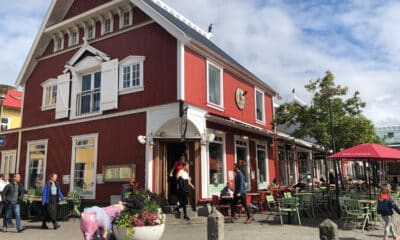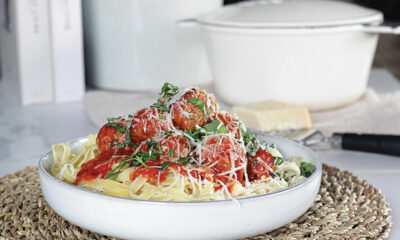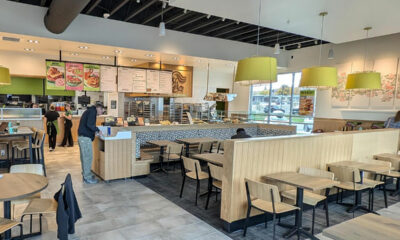Lifid
Dining in the desert
Having traveled the country’s major culinary destinations over the years, StarChefs’ editors have experienced the peculiar dining cultures of cities like Los Angeles, Boston, Chicago, San Francisco, Philadelphia, New Orleans, Seattle, Miami and, of course, our hometown of New York. Each city has its own dining vibe, as well as a set of challenging parameters that keep chefs on top of their game (and keep them complaining after-hours). For example, in Boston, many chefs struggle with a conservative dining base. In New York, chefs vie to stay in business as they dodge the slings and arrows of piercing reviewers, fickle diners, and angry landlords. Traditionally, few New Orleans chefs have dared to swim against the tide of Creole and Cajun cuisines, although now in the wake of Katrina, the effort to preserve that cultural legacy has grown immeasurably.
So what of Las Vegas, the Disneyland for adults, Sin City, the fastest growing city in America? The challenges that chefs face there are manifold. Foremost is the fact that everything about Las Vegas is larger than life. That means that chefs must reckon with 200-plus covers nightly, a daunting endeavor when those 200-odd diners come from all walks of life from all over the world. The daunting task of cooking for a broad range of clientele is magnified when the restaurant sits right on the casino floor, such as Bradley Ogden at Caesars or Michael Mina in the Bellagio. Everyone from high rollers to bachelor-partiers are likely to stroll in for a look or a bite.
The second biggest challenge lies in the fact that Las Vegas is literally a man-made oasis in the desert. Local produce is virtually non-existent, which means that almost all of the produce served there is shipped from around the country and the world. For chefs like Daniel Boulud at his brasserie in the Wynn, and Tom Colicchio at CraftSteak in MGM, sourcing first-rate product is a priority, no matter what the cost. So when you go to Las Vegas, you must expect to pay more for the heirloom tomato salad, or that fruit de mer platter.
While you just cant please everyone all of the time, Las Vegas chefs and restaurateurs often make the greatest effort to try, and most often the result is a middle-of-the-road approach with familiar ingredients, flavor combinations, as well as tried and true techniques. Those chefs who dare to push the envelope, such as Sven Mede at NobHill, Jacques Van Staden at Alizé, or Bryan Ogden at Bradley Ogden, have found a way to do so in ever so subtle ways, and we applaud their efforts.
Of course it is no wonder that the two most commonly overheard words in Las Vegas are buffet and steakhouse. While we cant say much for the buffets, we can highlight a handful of superb steakhouses that are really creative, fine dining restaurants in disguise SW Steakhouse, Neros, Prime, Charlie Palmer Steak and CraftSteak to be exact. Of course all that red meat deserves a fine Cabernet or Bordeaux, and one utterly brilliant element of the Las Vegas dining circuit is the veritable plethora of master sommeliers and trophy wine cellars that rival San Francisco and New York. As a chef-focused publication, rarely do we approach a meal as a compliment to wine, but in Vegas, it might be worth your while to build dinner around a bottle (high rollers and lucky beginners ) at your perilous expense.
There appears to be no end in sight to the influx of celebrity chef outlets Guy Savoy at Caesars being the most recent, with Mario Batali and David Burke fast on his heels. This phenomenon begs two questions: 1. Are these celebrity chef outposts as good as the original(s)? and 2. Can a talented chef who is not a mega-superstar open a restaurant in Las Vegas now and succeed?
The answer to the first question is an emphatic no given the afore-mentioned challenges, there is just no way that these copy cats can rival the level of cuisine being produced at their twin restaurants. The better formula that seems to be proving successful is a celebrity chef concept restaurant that doesnt seek to recreate a New York or San Francisco experience but rather tailors a restaurant concept to the peculiar challenges of the place. Daniel Boulud Brasserie is a perfect example. Mr. Boulud opted not to recreate the opulence of Daniel, or the chic fusion dishes of Café Boulud, or even the bistro moderne dishes of DB Bistro Moderne three successful restaurants set in New York City. Rather, he embraced the brasserie concept with its classic but limited menu that he knew he could better deliver at a high quality level every night of the week, every week of the year.
The second question is much harder to answer, and as we watch our young and talented Las Vegas Rising Stars blossom, we hope that the city’s ever-growing community will support them in their own right, just as other cities embrace these ambitious phenoms when they feel the time is right to spread their wings and step out of the shadows of their more experienced and celebrated mentor chefs.
And now a somewhat lengthy though still selective rundown of what to eat and where to stay in Las Vegas.
For more information, click here

-

 Viðtöl, örfréttir & frumraun4 dagar síðan
Viðtöl, örfréttir & frumraun4 dagar síðanGóður matur, góð viðskipti: Þekktir veitingastaðir með gríðarlega veltu
-

 Viðtöl, örfréttir & frumraun3 dagar síðan
Viðtöl, örfréttir & frumraun3 dagar síðanMötuneyti í nýju húsnæði Landsbankans fær Svansvottun
-

 Keppni3 dagar síðan
Keppni3 dagar síðanLandslið íslenskra matreiðslumanna fær kraftmikinn stuðning frá Íslandshótelum
-

 Frétt2 dagar síðan
Frétt2 dagar síðanGjaldþrot Hooters: Eftir 40 ár á toppnum er framtíðin óviss
-

 Markaðurinn4 dagar síðan
Markaðurinn4 dagar síðanUppskrift: Ítalskar kjötbollur með kotasælu og tagliatelle
-

 Markaðurinn3 dagar síðan
Markaðurinn3 dagar síðanUppskrift: Kjúklingalasagna með rjómaosti og spínati
-

 Frétt4 dagar síðan
Frétt4 dagar síðanTafir á heilbrigðiseftirliti veitingastaða í New York valda áhyggjum
-

 Starfsmannavelta3 dagar síðan
Starfsmannavelta3 dagar síðanPanera Bread lokar tveimur bakaríum í Kaliforníu og segir upp 350 starfsmönnum













